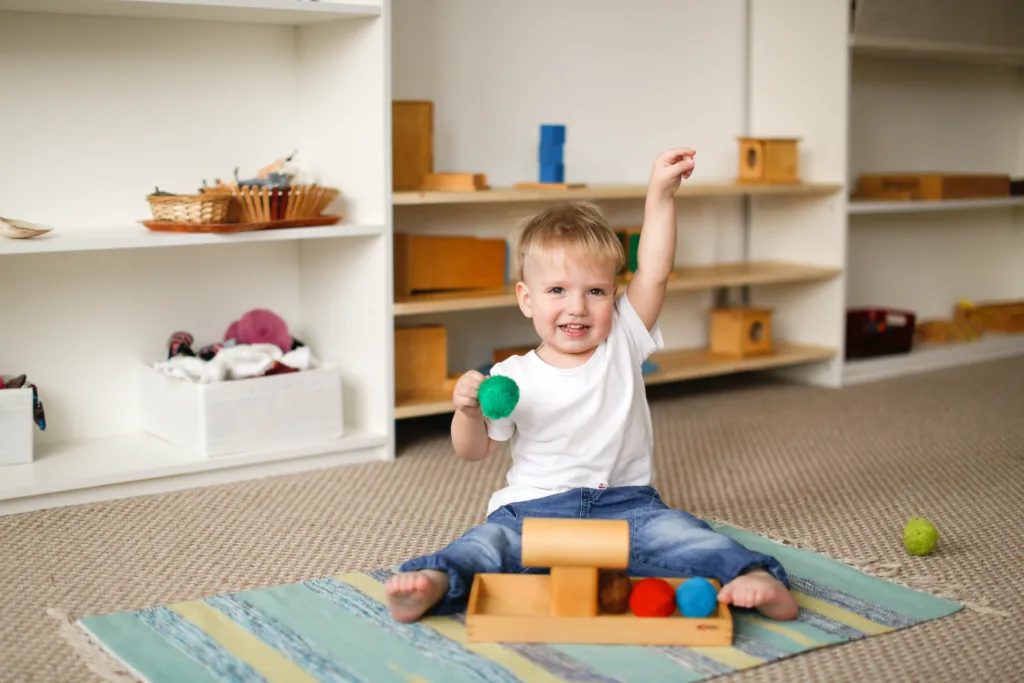Montesvit – Grow Together
with Your Child
A family space where the potential
of both children and parents unfolds.
About Us

Montesvit
Our courses
- All video lectures are pre-recorded
- Self-paced learning at a time that suits you
- Access for 6–12 months
Reviews
Myths about the Montessori method
Myth 1: “Montessori is a method for children with special needs”
Maria Montessori was the first female physician in Italy. While working at a psychiatric clinic, she became interested in children with intellectual disabilities due to the terrible conditions they lived in. She realized that their development could be supported through hands-on stimulation.
Montessori became the director of an orthophrenic school, where she helped the children progress to the point that they could take exams alongside typically developing students. This success led her to question the reasons for the low level of development in mainstream schools.
From 1896 to 1906, Maria led departments of hygiene and anthropology in Rome, developing her scientific method that reveals the inner world of the child.
Myth 2: “The Montessori method is not compatible with traditional school programs”
A child’s psychological readiness for school is more important than an early start. Montessori preschools provide an environment where children develop at their own pace, which helps them become better prepared for school. Children who are not ready for school may face difficulties that lead to stress and learning problems.
Myth 3: “Montessori is an artificial environment”
The Montessori environment is intentionally designed to meet the needs of the child, providing conditions for the development of their abilities. It offers a wide range of practical life skills—from self-care to cooking and using tools. Children learn to be independent in a safe and supportive setting, which actually helps prepare them for real life.
Myth 4: “There is no creativity in Montessori”
The Montessori environment is carefully prepared for children and offers aesthetically pleasing materials that inspire creativity. Children have access to a variety of tools and resources, such as pencils, paints, scissors, and more. Creativity is expressed not only in the art area but also through sensory, math, and language activities. Children independently choose their materials, workspace, and the duration of their activity without evaluation or pressure from adults, which encourages the development of their creative initiative.
Myth 5: “Children of different ages can't learn together”
Mixed-age groups in Montessori classrooms support a natural learning process, where older children help younger ones—fostering cooperation and mutual support among all participants. This encourages intrinsic motivation and independence. The Montessori environment allows children to develop at their own pace, without comparison or competition. It’s important to remember that school readiness is individual, and children are not expected to meet a single standard.
Myth 6: “Children in Montessori don’t play”
In Montessori classrooms, play has a learning purpose. Children interact with materials that support the development of skills and abilities, rather than just providing entertainment. For example, instead of a toy kitchen for pretend play, a Montessori space offers real dishes and tools that help develop fine motor skills, concentration, and practical life abilities. All activities are designed to be meaningful and educational, not just fun.
Myth 7: “Montessori children are not socialized”
Montessori schools actively teach children how to resolve conflicts and interact with peers in a structured environment. Educators provide effective tools for conflict resolution, ensuring a fair and respectful atmosphere for every child. This helps children not only socialize, but also develop skills they will need in real life. Montessori principles teach cooperation and problem-solving, preparing children for adulthood where they can independently choose their environment and avoid negative influences.
